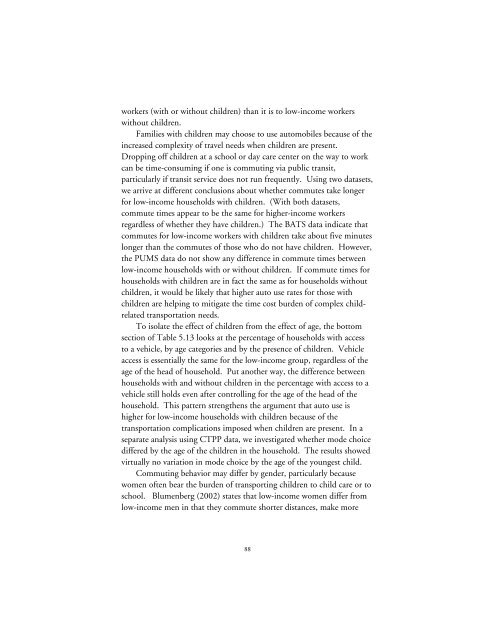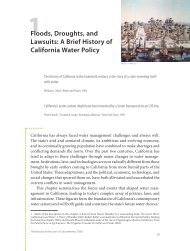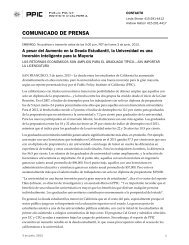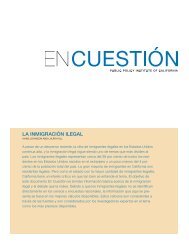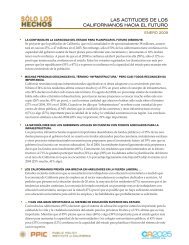Transportation Spending by Low-Income California Households ...
Transportation Spending by Low-Income California Households ...
Transportation Spending by Low-Income California Households ...
You also want an ePaper? Increase the reach of your titles
YUMPU automatically turns print PDFs into web optimized ePapers that Google loves.
workers (with or without children) than it is to low-income workers<br />
without children.<br />
Families with children may choose to use automobiles because of the<br />
increased complexity of travel needs when children are present.<br />
Dropping off children at a school or day care center on the way to work<br />
can be time-consuming if one is commuting via public transit,<br />
particularly if transit service does not run frequently. Using two datasets,<br />
we arrive at different conclusions about whether commutes take longer<br />
for low-income households with children. (With both datasets,<br />
commute times appear to be the same for higher-income workers<br />
regardless of whether they have children.) The BATS data indicate that<br />
commutes for low-income workers with children take about five minutes<br />
longer than the commutes of those who do not have children. However,<br />
the PUMS data do not show any difference in commute times between<br />
low-income households with or without children. If commute times for<br />
households with children are in fact the same as for households without<br />
children, it would be likely that higher auto use rates for those with<br />
children are helping to mitigate the time cost burden of complex childrelated<br />
transportation needs.<br />
To isolate the effect of children from the effect of age, the bottom<br />
section of Table 5.13 looks at the percentage of households with access<br />
to a vehicle, <strong>by</strong> age categories and <strong>by</strong> the presence of children. Vehicle<br />
access is essentially the same for the low-income group, regardless of the<br />
age of the head of household. Put another way, the difference between<br />
households with and without children in the percentage with access to a<br />
vehicle still holds even after controlling for the age of the head of the<br />
household. This pattern strengthens the argument that auto use is<br />
higher for low-income households with children because of the<br />
transportation complications imposed when children are present. In a<br />
separate analysis using CTPP data, we investigated whether mode choice<br />
differed <strong>by</strong> the age of the children in the household. The results showed<br />
virtually no variation in mode choice <strong>by</strong> the age of the youngest child.<br />
Commuting behavior may differ <strong>by</strong> gender, particularly because<br />
women often bear the burden of transporting children to child care or to<br />
school. Blumenberg (2002) states that low-income women differ from<br />
low-income men in that they commute shorter distances, make more<br />
88


